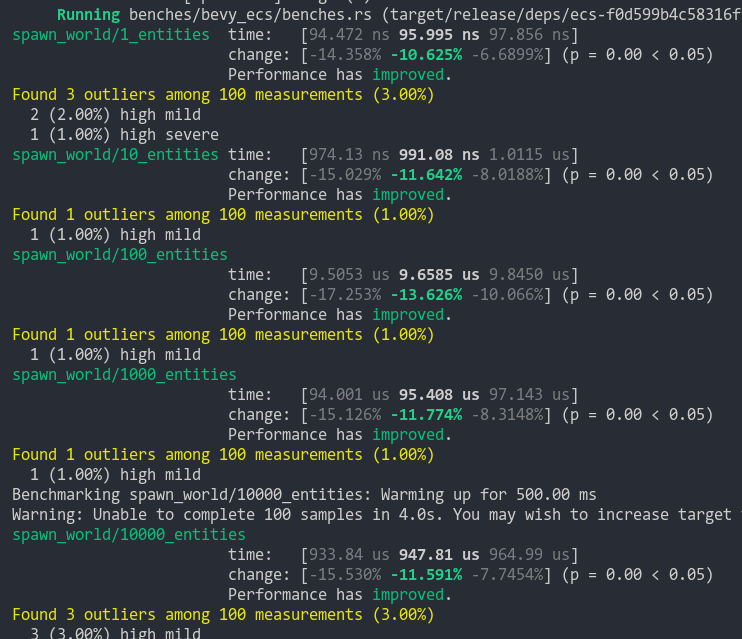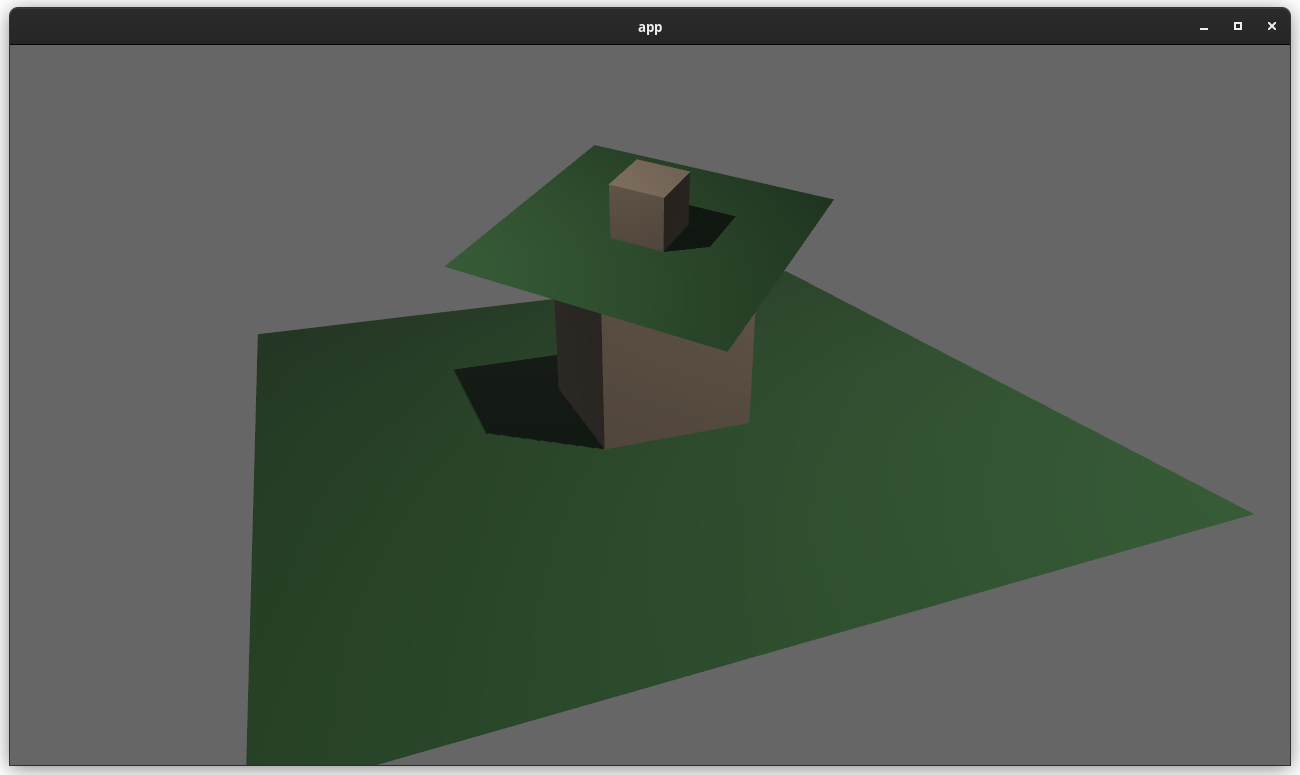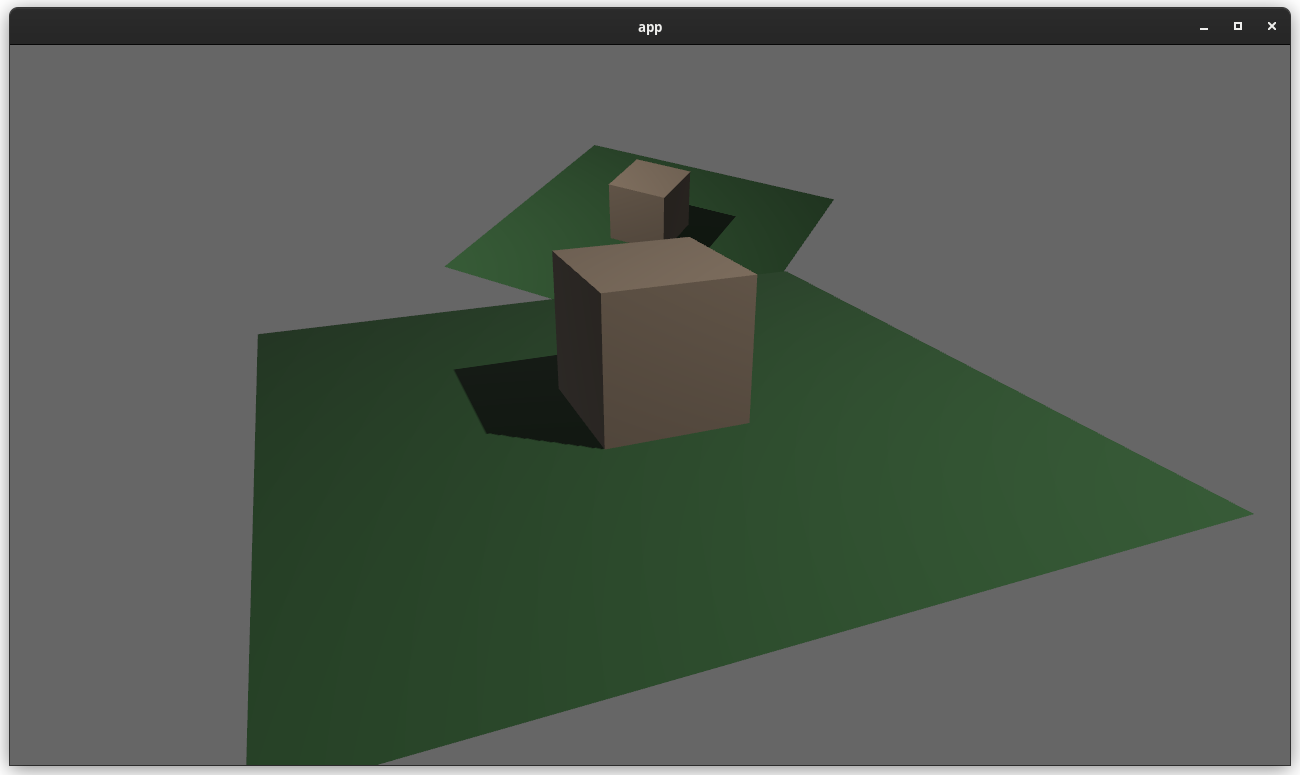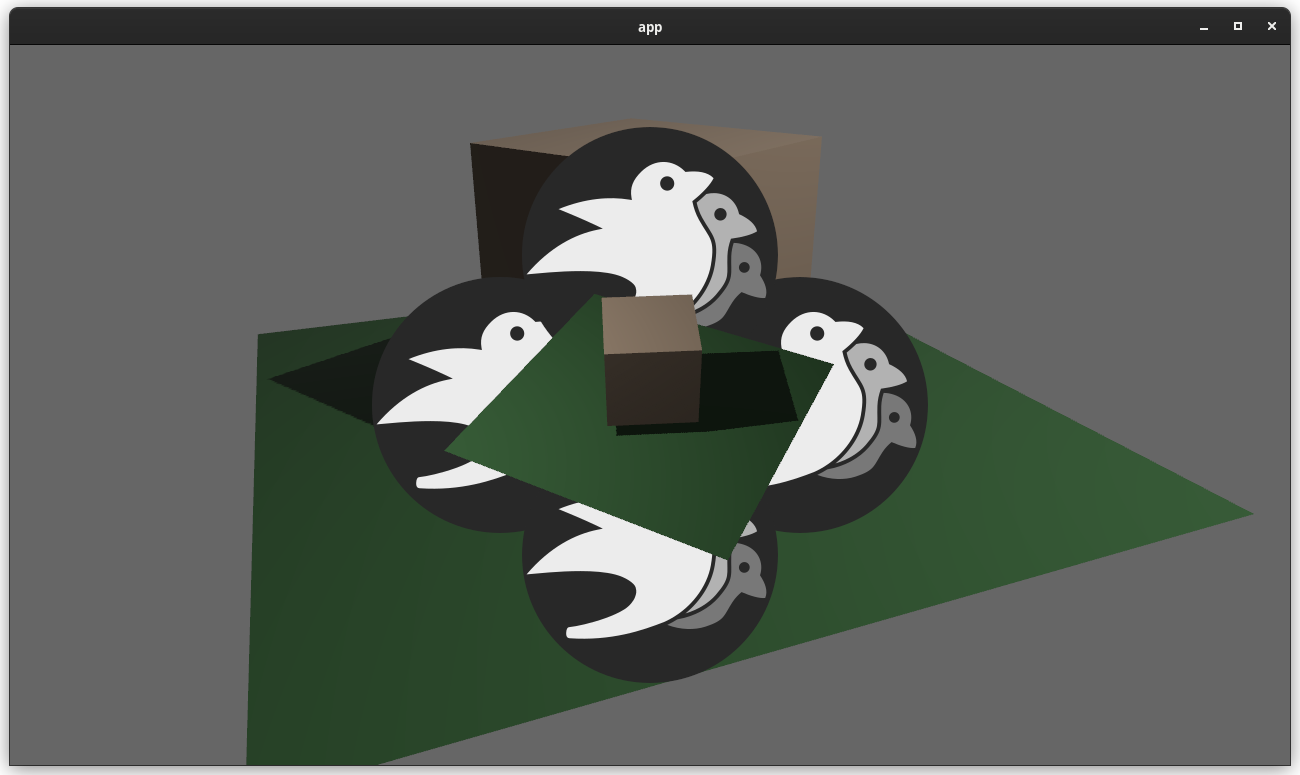# Objective
Fix https://github.com/bevyengine/bevy/issues/11577.
## Solution
Fix the examples, add a few constants to make setting light values
easier, and change the default lighting settings to be more realistic.
(Now designed for an overcast day instead of an indoor environment)
---
I did not include any example-related changes in here.
## Changelogs (not including breaking changes)
### bevy_pbr
- Added `light_consts` module (included in prelude), which contains
common lux and lumen values for lights.
- Added `AmbientLight::NONE` constant, which is an ambient light with a
brightness of 0.
- Added non-EV100 variants for `ExposureSettings`'s EV100 constants,
which allow easier construction of an `ExposureSettings` from a EV100
constant.
## Breaking changes
### bevy_pbr
The several default lighting values were changed:
- `PointLight`'s default `intensity` is now `2000.0`
- `SpotLight`'s default `intensity` is now `2000.0`
- `DirectionalLight`'s default `illuminance` is now
`light_consts::lux::OVERCAST_DAY` (`1000.`)
- `AmbientLight`'s default `brightness` is now `20.0`
# Objective
#11431 and #11688 implemented meshing support for Bevy's new geometric
primitives. The next step is to deprecate the shapes in
`bevy_render::mesh::shape` and to later remove them completely for 0.14.
## Solution
Deprecate the shapes and reduce code duplication by utilizing the
primitive meshing API for the old shapes where possible.
Note that some shapes have behavior that can't be exactly reproduced
with the new primitives yet:
- `Box` is more of an AABB with min/max extents
- `Plane` supports a subdivision count
- `Quad` has a `flipped` property
These types have not been changed to utilize the new primitives yet.
---
## Changelog
- Deprecated all shapes in `bevy_render::mesh::shape`
- Changed all examples to use new primitives for meshing
## Migration Guide
Bevy has previously used rendering-specific types like `UVSphere` and
`Quad` for primitive mesh shapes. These have now been deprecated to use
the geometric primitives newly introduced in version 0.13.
Some examples:
```rust
let before = meshes.add(shape::Box::new(5.0, 0.15, 5.0));
let after = meshes.add(Cuboid::new(5.0, 0.15, 5.0));
let before = meshes.add(shape::Quad::default());
let after = meshes.add(Rectangle::default());
let before = meshes.add(shape::Plane::from_size(5.0));
// The surface normal can now also be specified when using `new`
let after = meshes.add(Plane3d::default().mesh().size(5.0, 5.0));
let before = meshes.add(
Mesh::try_from(shape::Icosphere {
radius: 0.5,
subdivisions: 5,
})
.unwrap(),
);
let after = meshes.add(Sphere::new(0.5).mesh().ico(5).unwrap());
```
Rebased and finished version of
https://github.com/bevyengine/bevy/pull/8407. Huge thanks to @GitGhillie
for adjusting all the examples, and the many other people who helped
write this PR (@superdump , @coreh , among others) :)
Fixes https://github.com/bevyengine/bevy/issues/8369
---
## Changelog
- Added a `brightness` control to `Skybox`.
- Added an `intensity` control to `EnvironmentMapLight`.
- Added `ExposureSettings` and `PhysicalCameraParameters` for
controlling exposure of 3D cameras.
- Removed the baked-in `DirectionalLight` exposure Bevy previously
hardcoded internally.
## Migration Guide
- If using a `Skybox` or `EnvironmentMapLight`, use the new `brightness`
and `intensity` controls to adjust their strength.
- All 3D scene will now have different apparent brightnesses due to Bevy
implementing proper exposure controls. You will have to adjust the
intensity of your lights and/or your camera exposure via the new
`ExposureSettings` component to compensate.
---------
Co-authored-by: Robert Swain <robert.swain@gmail.com>
Co-authored-by: GitGhillie <jillisnoordhoek@gmail.com>
Co-authored-by: Marco Buono <thecoreh@gmail.com>
Co-authored-by: vero <email@atlasdostal.com>
Co-authored-by: atlas dostal <rodol@rivalrebels.com>
# Motivation
When spawning entities into a scene, it is very common to create assets
like meshes and materials and to add them via asset handles. A common
setup might look like this:
```rust
fn setup(
mut commands: Commands,
mut meshes: ResMut<Assets<Mesh>>,
mut materials: ResMut<Assets<StandardMaterial>>,
) {
commands.spawn(PbrBundle {
mesh: meshes.add(Mesh::from(shape::Cube { size: 1.0 })),
material: materials.add(StandardMaterial::from(Color::RED)),
..default()
});
}
```
Let's take a closer look at the part that adds the assets using `add`.
```rust
mesh: meshes.add(Mesh::from(shape::Cube { size: 1.0 })),
material: materials.add(StandardMaterial::from(Color::RED)),
```
Here, "mesh" and "material" are both repeated three times. It's very
explicit, but I find it to be a bit verbose. In addition to being more
code to read and write, the extra characters can sometimes also lead to
the code being formatted to span multiple lines even though the core
task, adding e.g. a primitive mesh, is extremely simple.
A way to address this is by using `.into()`:
```rust
mesh: meshes.add(shape::Cube { size: 1.0 }.into()),
material: materials.add(Color::RED.into()),
```
This is fine, but from the names and the type of `meshes`, we already
know what the type should be. It's very clear that `Cube` should be
turned into a `Mesh` because of the context it's used in. `.into()` is
just seven characters, but it's so common that it quickly adds up and
gets annoying.
It would be nice if you could skip all of the conversion and let Bevy
handle it for you:
```rust
mesh: meshes.add(shape::Cube { size: 1.0 }),
material: materials.add(Color::RED),
```
# Objective
Make adding assets more ergonomic by making `Assets::add` take an `impl
Into<A>` instead of `A`.
## Solution
`Assets::add` now takes an `impl Into<A>` instead of `A`, so e.g. this
works:
```rust
commands.spawn(PbrBundle {
mesh: meshes.add(shape::Cube { size: 1.0 }),
material: materials.add(Color::RED),
..default()
});
```
I also changed all examples to use this API, which increases consistency
as well because `Mesh::from` and `into` were being used arbitrarily even
in the same file. This also gets rid of some lines of code because
formatting is nicer.
---
## Changelog
- `Assets::add` now takes an `impl Into<A>` instead of `A`
- Examples don't use `T::from(K)` or `K.into()` when adding assets
## Migration Guide
Some `into` calls that worked previously might now be broken because of
the new trait bounds. You need to either remove `into` or perform the
conversion explicitly with `from`:
```rust
// Doesn't compile
let mesh_handle = meshes.add(shape::Cube { size: 1.0 }.into()),
// These compile
let mesh_handle = meshes.add(shape::Cube { size: 1.0 }),
let mesh_handle = meshes.add(Mesh::from(shape::Cube { size: 1.0 })),
```
## Concerns
I believe the primary concerns might be:
1. Is this too implicit?
2. Does this increase codegen bloat?
Previously, the two APIs were using `into` or `from`, and now it's
"nothing" or `from`. You could argue that `into` is slightly more
explicit than "nothing" in cases like the earlier examples where a
`Color` gets converted to e.g. a `StandardMaterial`, but I personally
don't think `into` adds much value even in this case, and you could
still see the actual type from the asset type.
As for codegen bloat, I doubt it adds that much, but I'm not very
familiar with the details of codegen. I personally value the user-facing
code reduction and ergonomics improvements that these changes would
provide, but it might be worth checking the other effects in more
detail.
Another slight concern is migration pain; apps might have a ton of
`into` calls that would need to be removed, and it did take me a while
to do so for Bevy itself (maybe around 20-40 minutes). However, I think
the fact that there *are* so many `into` calls just highlights that the
API could be made nicer, and I'd gladly migrate my own projects for it.
# Objective
- Custom render passes, or future passes in the engine (such as
https://github.com/bevyengine/bevy/pull/10164) need a better way to know
and indicate to the core passes whether the view color/depth/prepass
attachments have been cleared or not yet this frame, to know if they
should clear it themselves or load it.
## Solution
- For all render targets (depth textures, shadow textures, prepass
textures, main textures) use an atomic bool to track whether or not each
texture has been cleared this frame. Abstracted away in the new
ColorAttachment and DepthAttachment wrappers.
---
## Changelog
- Changed `ViewTarget::get_color_attachment()`, removed arguments.
- Changed `ViewTarget::get_unsampled_color_attachment()`, removed
arguments.
- Removed `Camera3d::clear_color`.
- Removed `Camera2d::clear_color`.
- Added `Camera::clear_color`.
- Added `ExtractedCamera::clear_color`.
- Added `ColorAttachment` and `DepthAttachment` wrappers.
- Moved `ClearColor` and `ClearColorConfig` from
`bevy::core_pipeline::clear_color` to `bevy::render::camera`.
- Core render passes now track when a texture is first bound as an
attachment in order to decide whether to clear or load it.
## Migration Guide
- Remove arguments to `ViewTarget::get_color_attachment()` and
`ViewTarget::get_unsampled_color_attachment()`.
- Configure clear color on `Camera` instead of on `Camera3d` and
`Camera2d`.
- Moved `ClearColor` and `ClearColorConfig` from
`bevy::core_pipeline::clear_color` to `bevy::render::camera`.
- `ViewDepthTexture` must now be created via the `new()` method
---------
Co-authored-by: vero <email@atlasdostal.com>
Co-authored-by: Alice Cecile <alice.i.cecile@gmail.com>
# Objective
There was issue #191 requesting subdivisions on the shape::Plane.
I also could have used this recently. I then write the solution.
Fixes #191
## Solution
I changed the shape::Plane to include subdivisions field and the code to create the subdivisions. I don't know how people are counting subdivisions so as I put in the doc comments 0 subdivisions results in the original geometry of the Plane.
Greater then 0 results in the number of lines dividing the plane.
I didn't know if it would be better to create a new struct that implemented this feature, say SubdivisionPlane or change Plane. I decided on changing Plane as that was what the original issue was.
It would be trivial to alter this to use another struct instead of altering Plane.
The issues of migration, although small, would be eliminated if a new struct was implemented.
## Changelog
### Added
Added subdivisions field to shape::Plane
## Migration Guide
All the examples needed to be updated to initalize the subdivisions field.
Also there were two tests in tests/window that need to be updated.
A user would have to update all their uses of shape::Plane to initalize the subdivisions field.
# Objective
The documentation for camera priority is very confusing at the moment, it requires a bit of "double negative" kind of thinking.
# Solution
Flipping the wording on the documentation to reflect more common usecases like having an overlay camera and also renaming it to "order", since priority implies that it will override the other camera rather than have both run.
# Objective
Now that we can consolidate Bundles and Components under a single insert (thanks to #2975 and #6039), almost 100% of world spawns now look like `world.spawn().insert((Some, Tuple, Here))`. Spawning an entity without any components is an extremely uncommon pattern, so it makes sense to give spawn the "first class" ergonomic api. This consolidated api should be made consistent across all spawn apis (such as World and Commands).
## Solution
All `spawn` apis (`World::spawn`, `Commands:;spawn`, `ChildBuilder::spawn`, and `WorldChildBuilder::spawn`) now accept a bundle as input:
```rust
// before:
commands
.spawn()
.insert((A, B, C));
world
.spawn()
.insert((A, B, C);
// after
commands.spawn((A, B, C));
world.spawn((A, B, C));
```
All existing instances of `spawn_bundle` have been deprecated in favor of the new `spawn` api. A new `spawn_empty` has been added, replacing the old `spawn` api.
By allowing `world.spawn(some_bundle)` to replace `world.spawn().insert(some_bundle)`, this opened the door to removing the initial entity allocation in the "empty" archetype / table done in `spawn()` (and subsequent move to the actual archetype in `.insert(some_bundle)`).
This improves spawn performance by over 10%:

To take this measurement, I added a new `world_spawn` benchmark.
Unfortunately, optimizing `Commands::spawn` is slightly less trivial, as Commands expose the Entity id of spawned entities prior to actually spawning. Doing the optimization would (naively) require assurances that the `spawn(some_bundle)` command is applied before all other commands involving the entity (which would not necessarily be true, if memory serves). Optimizing `Commands::spawn` this way does feel possible, but it will require careful thought (and maybe some additional checks), which deserves its own PR. For now, it has the same performance characteristics of the current `Commands::spawn_bundle` on main.
**Note that 99% of this PR is simple renames and refactors. The only code that needs careful scrutiny is the new `World::spawn()` impl, which is relatively straightforward, but it has some new unsafe code (which re-uses battle tested BundlerSpawner code path).**
---
## Changelog
- All `spawn` apis (`World::spawn`, `Commands:;spawn`, `ChildBuilder::spawn`, and `WorldChildBuilder::spawn`) now accept a bundle as input
- All instances of `spawn_bundle` have been deprecated in favor of the new `spawn` api
- World and Commands now have `spawn_empty()`, which is equivalent to the old `spawn()` behavior.
## Migration Guide
```rust
// Old (0.8):
commands
.spawn()
.insert_bundle((A, B, C));
// New (0.9)
commands.spawn((A, B, C));
// Old (0.8):
commands.spawn_bundle((A, B, C));
// New (0.9)
commands.spawn((A, B, C));
// Old (0.8):
let entity = commands.spawn().id();
// New (0.9)
let entity = commands.spawn_empty().id();
// Old (0.8)
let entity = world.spawn().id();
// New (0.9)
let entity = world.spawn_empty();
```
# Objective
Users should be able to configure depth load operations on cameras. Currently every camera clears depth when it is rendered. But sometimes later passes need to rely on depth from previous passes.
## Solution
This adds the `Camera3d::depth_load_op` field with a new `Camera3dDepthLoadOp` value. This is a custom type because Camera3d uses "reverse-z depth" and this helps us record and document that in a discoverable way. It also gives us more control over reflection + other trait impls, whereas `LoadOp` is owned by the `wgpu` crate.
```rust
commands.spawn_bundle(Camera3dBundle {
camera_3d: Camera3d {
depth_load_op: Camera3dDepthLoadOp::Load,
..default()
},
..default()
});
```
### two_passes example with the "second pass" camera configured to the default (clear depth to 0.0)

### two_passes example with the "second pass" camera configured to "load" the depth

---
## Changelog
### Added
* `Camera3d` now has a `depth_load_op` field, which can configure the Camera's main 3d pass depth loading behavior.
This adds "high level camera driven rendering" to Bevy. The goal is to give users more control over what gets rendered (and where) without needing to deal with render logic. This will make scenarios like "render to texture", "multiple windows", "split screen", "2d on 3d", "3d on 2d", "pass layering", and more significantly easier.
Here is an [example of a 2d render sandwiched between two 3d renders (each from a different perspective)](https://gist.github.com/cart/4fe56874b2e53bc5594a182fc76f4915):

Users can now spawn a camera, point it at a RenderTarget (a texture or a window), and it will "just work".
Rendering to a second window is as simple as spawning a second camera and assigning it to a specific window id:
```rust
// main camera (main window)
commands.spawn_bundle(Camera2dBundle::default());
// second camera (other window)
commands.spawn_bundle(Camera2dBundle {
camera: Camera {
target: RenderTarget::Window(window_id),
..default()
},
..default()
});
```
Rendering to a texture is as simple as pointing the camera at a texture:
```rust
commands.spawn_bundle(Camera2dBundle {
camera: Camera {
target: RenderTarget::Texture(image_handle),
..default()
},
..default()
});
```
Cameras now have a "render priority", which controls the order they are drawn in. If you want to use a camera's output texture as a texture in the main pass, just set the priority to a number lower than the main pass camera (which defaults to `0`).
```rust
// main pass camera with a default priority of 0
commands.spawn_bundle(Camera2dBundle::default());
commands.spawn_bundle(Camera2dBundle {
camera: Camera {
target: RenderTarget::Texture(image_handle.clone()),
priority: -1,
..default()
},
..default()
});
commands.spawn_bundle(SpriteBundle {
texture: image_handle,
..default()
})
```
Priority can also be used to layer to cameras on top of each other for the same RenderTarget. This is what "2d on top of 3d" looks like in the new system:
```rust
commands.spawn_bundle(Camera3dBundle::default());
commands.spawn_bundle(Camera2dBundle {
camera: Camera {
// this will render 2d entities "on top" of the default 3d camera's render
priority: 1,
..default()
},
..default()
});
```
There is no longer the concept of a global "active camera". Resources like `ActiveCamera<Camera2d>` and `ActiveCamera<Camera3d>` have been replaced with the camera-specific `Camera::is_active` field. This does put the onus on users to manage which cameras should be active.
Cameras are now assigned a single render graph as an "entry point", which is configured on each camera entity using the new `CameraRenderGraph` component. The old `PerspectiveCameraBundle` and `OrthographicCameraBundle` (generic on camera marker components like Camera2d and Camera3d) have been replaced by `Camera3dBundle` and `Camera2dBundle`, which set 3d and 2d default values for the `CameraRenderGraph` and projections.
```rust
// old 3d perspective camera
commands.spawn_bundle(PerspectiveCameraBundle::default())
// new 3d perspective camera
commands.spawn_bundle(Camera3dBundle::default())
```
```rust
// old 2d orthographic camera
commands.spawn_bundle(OrthographicCameraBundle::new_2d())
// new 2d orthographic camera
commands.spawn_bundle(Camera2dBundle::default())
```
```rust
// old 3d orthographic camera
commands.spawn_bundle(OrthographicCameraBundle::new_3d())
// new 3d orthographic camera
commands.spawn_bundle(Camera3dBundle {
projection: OrthographicProjection {
scale: 3.0,
scaling_mode: ScalingMode::FixedVertical,
..default()
}.into(),
..default()
})
```
Note that `Camera3dBundle` now uses a new `Projection` enum instead of hard coding the projection into the type. There are a number of motivators for this change: the render graph is now a part of the bundle, the way "generic bundles" work in the rust type system prevents nice `..default()` syntax, and changing projections at runtime is much easier with an enum (ex for editor scenarios). I'm open to discussing this choice, but I'm relatively certain we will all come to the same conclusion here. Camera2dBundle and Camera3dBundle are much clearer than being generic on marker components / using non-default constructors.
If you want to run a custom render graph on a camera, just set the `CameraRenderGraph` component:
```rust
commands.spawn_bundle(Camera3dBundle {
camera_render_graph: CameraRenderGraph::new(some_render_graph_name),
..default()
})
```
Just note that if the graph requires data from specific components to work (such as `Camera3d` config, which is provided in the `Camera3dBundle`), make sure the relevant components have been added.
Speaking of using components to configure graphs / passes, there are a number of new configuration options:
```rust
commands.spawn_bundle(Camera3dBundle {
camera_3d: Camera3d {
// overrides the default global clear color
clear_color: ClearColorConfig::Custom(Color::RED),
..default()
},
..default()
})
commands.spawn_bundle(Camera3dBundle {
camera_3d: Camera3d {
// disables clearing
clear_color: ClearColorConfig::None,
..default()
},
..default()
})
```
Expect to see more of the "graph configuration Components on Cameras" pattern in the future.
By popular demand, UI no longer requires a dedicated camera. `UiCameraBundle` has been removed. `Camera2dBundle` and `Camera3dBundle` now both default to rendering UI as part of their own render graphs. To disable UI rendering for a camera, disable it using the CameraUi component:
```rust
commands
.spawn_bundle(Camera3dBundle::default())
.insert(CameraUi {
is_enabled: false,
..default()
})
```
## Other Changes
* The separate clear pass has been removed. We should revisit this for things like sky rendering, but I think this PR should "keep it simple" until we're ready to properly support that (for code complexity and performance reasons). We can come up with the right design for a modular clear pass in a followup pr.
* I reorganized bevy_core_pipeline into Core2dPlugin and Core3dPlugin (and core_2d / core_3d modules). Everything is pretty much the same as before, just logically separate. I've moved relevant types (like Camera2d, Camera3d, Camera3dBundle, Camera2dBundle) into their relevant modules, which is what motivated this reorganization.
* I adapted the `scene_viewer` example (which relied on the ActiveCameras behavior) to the new system. I also refactored bits and pieces to be a bit simpler.
* All of the examples have been ported to the new camera approach. `render_to_texture` and `multiple_windows` are now _much_ simpler. I removed `two_passes` because it is less relevant with the new approach. If someone wants to add a new "layered custom pass with CameraRenderGraph" example, that might fill a similar niche. But I don't feel much pressure to add that in this pr.
* Cameras now have `target_logical_size` and `target_physical_size` fields, which makes finding the size of a camera's render target _much_ simpler. As a result, the `Assets<Image>` and `Windows` parameters were removed from `Camera::world_to_screen`, making that operation much more ergonomic.
* Render order ambiguities between cameras with the same target and the same priority now produce a warning. This accomplishes two goals:
1. Now that there is no "global" active camera, by default spawning two cameras will result in two renders (one covering the other). This would be a silent performance killer that would be hard to detect after the fact. By detecting ambiguities, we can provide a helpful warning when this occurs.
2. Render order ambiguities could result in unexpected / unpredictable render results. Resolving them makes sense.
## Follow Up Work
* Per-Camera viewports, which will make it possible to render to a smaller area inside of a RenderTarget (great for something like splitscreen)
* Camera-specific MSAA config (should use the same "overriding" pattern used for ClearColor)
* Graph Based Camera Ordering: priorities are simple, but they make complicated ordering constraints harder to express. We should consider adopting a "graph based" camera ordering model with "before" and "after" relationships to other cameras (or build it "on top" of the priority system).
* Consider allowing graphs to run subgraphs from any nest level (aka a global namespace for graphs). Right now the 2d and 3d graphs each need their own UI subgraph, which feels "fine" in the short term. But being able to share subgraphs between other subgraphs seems valuable.
* Consider splitting `bevy_core_pipeline` into `bevy_core_2d` and `bevy_core_3d` packages. Theres a shared "clear color" dependency here, which would need a new home.
# Objective
- Coming from 7a596f1910 (r876310734)
- Simplify the examples regarding addition of `Msaa` Resource with default value.
## Solution
- Remove addition of `Msaa` Resource with default value from examples,
# Objective
Provide a starting point for #3951, or a partial solution.
Providing a few comment blocks to discuss, and hopefully find better one in the process.
## Solution
Since I am pretty new to pretty much anything in this context, I figured I'd just start with a draft for some file level doc blocks. For some of them I found more relevant details (or at least things I considered interessting), for some others there is less.
## Changelog
- Moved some existing comments from main() functions in the 2d examples to the file header level
- Wrote some more comment blocks for most other 2d examples
TODO:
- [x] 2d/sprite_sheet, wasnt able to come up with something good yet
- [x] all other example groups...
Also: Please let me know if the commit style is okay, or to verbose. I could certainly squash these things, or add more details if needed.
I also hope its okay to raise this PR this early, with just a few files changed. Took me long enough and I dont wanted to let it go to waste because I lost motivation to do the whole thing. Additionally I am somewhat uncertain over the style and contents of the commets. So let me know what you thing please.
# Objective
Fixes https://github.com/bevyengine/bevy/issues/3499
## Solution
Uses a `HashMap` from `RenderTarget` to sampled textures when preparing `ViewTarget`s to ensure that two passes with the same render target get sampled to the same texture.
This builds on and depends on https://github.com/bevyengine/bevy/pull/3412, so this will be a draft PR until #3412 is merged. All changes for this PR are in the last commit.